Black Friday Special: Apply BF2025 at checkout for 50% off your initial purchase
Click or tap each arrondissment to learn more and see a photo.

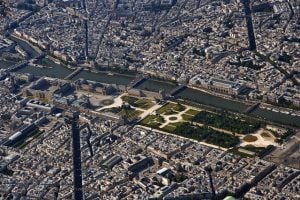
Situated principally on the right bank of the River Seine, it also includes the west end of the Île de la Cité. The arrondissement is one of the oldest in Paris, the Île de la Cité having been the heart of the city of Lutetia, conquered by the Romans in 52 BC, while some parts on the right bank (including Les Halles) date back to the early Middle Ages.
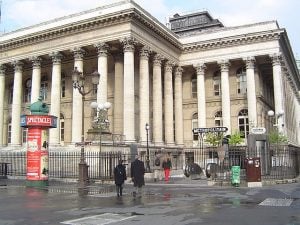
Located on the right bank of the River Seine, the 2nd arrondissement, together with the adjacent 8th and 9th arrondissements, hosts an important business district, centered on the Paris Opéra, which houses the city's most dense concentration of business activities.
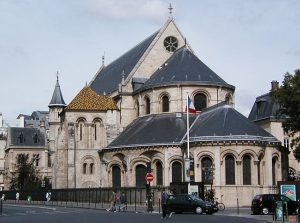
The 3rd arrondissement of Paris, situated on the right bank of the River Seine, is the smallest in area after the 2nd arrondissement. The arrondissement contains the northern, quieter part of the medieval district of Le Marais. The oldest surviving private house of Paris, built in 1407, is to be found in the 3rd arrondissement, along the rue de Montmorency.
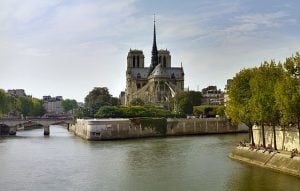
The 4th arrondissement contains the Renaissance-era Paris City Hall. It also contains the Renaissance square of Place des Vosges, the overtly modern Pompidou Centre and the lively southern part of the medieval district of Le Marais, which today is known for being the gay district of Paris (while the more quiet northern part of Le Marais is contained inside the 3rd arrondissement).
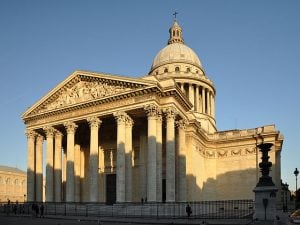
Situated on the left bank of the River Seine, the 5th arrondissement is one of the central arrondissements of the capital. The arrondissement is notable for being the location of the Quartier Latin, a district dominated by universities, colleges, and prestigious high schools.
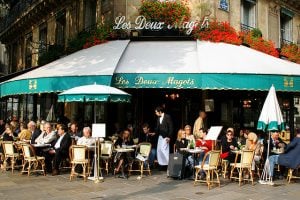
The 6th arrondissement of Paris includes world-famous educational institutions such as the École des Beaux-Arts de Paris and the Académie française, the seat of the French Senate as well as a concentration of some of Paris's most famous monuments such as Saint-Germain Abbey and square, St. Sulpice Church and square, the Pont des Arts and the Jardin du Luxembourg.
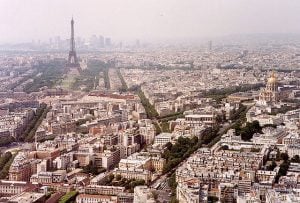
The 7th arrondissement of Paris includes some of the major tourist attractions of Paris, such as the Eiffel Tower and the Hôtel des Invalides, and a concentration of such world-famous museums as the Musée d'Orsay, Musée Rodin, and the Musée du quai Branly.
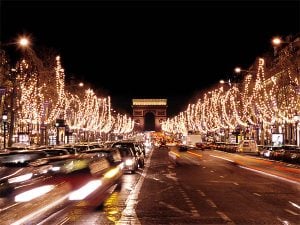
Situated on the right bank of the River Seine and centered on the Champs-Élysées, the 8th is, together with the 1st, 9th, 16th and 17th arrondissement, one of Paris's main business districts. According to the 1999 census, it was the place of employment of more people than any other single arrondissement of the capital.
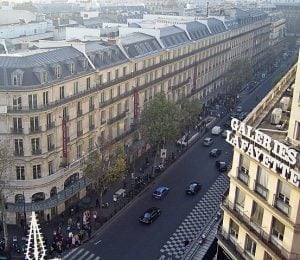
The 9th arrondissement (IXe arrondissement), located on the Right Bank, is one of the 20 arrondissements of Paris, France. It contains many places of cultural, historical and architectural interest, including the Palais Garnier, home to the Paris Opera, Boulevard Haussmann and its large department stores Galeries Lafayette and Printemps.
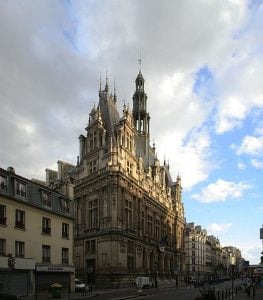
Situated on the right bank of the River Seine, the 10th arrondissement contains two of Paris's six main railway stations: the Gare du Nord and the Gare de l'Est. Built during the 19th century, these two termini are among the busiest in Europe. It also contains a large portion of the Canal Saint-Martin, linking the northeastern parts of Paris with the River Seine.
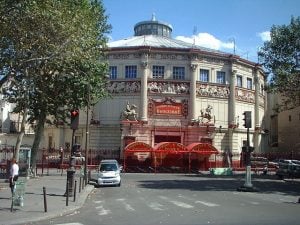
Situated on the Right Bank of the River Seine, the 11th is one of the most densely populated urban districts not just of Paris, but of any European city. To the west lies the Place de la République, which is linked to the Place de la Bastille, in the east, by the sweeping, tree-lined Boulevard Richard-Lenoir, with its large markets and children's parks.
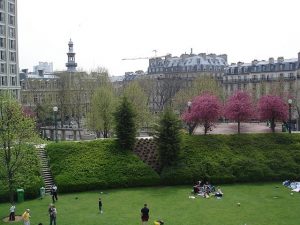
The 12th arrondissement contains the Opéra de la Bastille, the second largest opera house in Paris. It was inaugurated in 1989, on the 200th anniversary of the storming of the Bastille. The Bois de Vincennes is also located in this arrondissement.
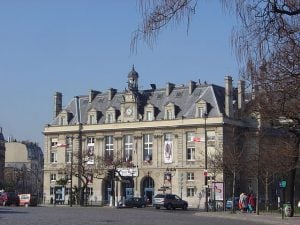
Situated on the Left Bank of the River Seine, the 13th arrondissement is home to Paris's principal Asian community, the Quartier Asiatique, located in the southeast of the arrondissement in an area that contains many high-rise apartment buildings.
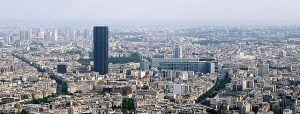
Situated on the left bank of the River Seine, the 14th arrondissement contains most of the Montparnasse district. It is today best known for its skyscraper, the Tour Montparnasse, and its major railway terminus, the Gare Montparnasse, both located in the neighboring 15th arrondissement.
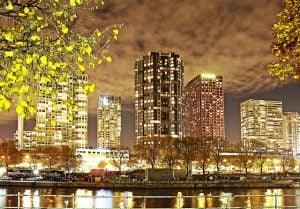
Situated on the Rive Gauche (left bank) of the River Seine and sharing the Montparnasse district with the 6th and 14th arrondissements, the 15th arrondissement is the city's most populous arrondissement.
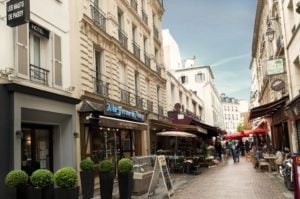
The 16th arrondissement of Paris includes a concentration of museums between the Place du Trocadéro and the Place d'Iéna. The arrondissement has long been known as one of French high society's favorite places of residence to such an extent that the phrase le 16e has been associated with great wealth in French popular culture.
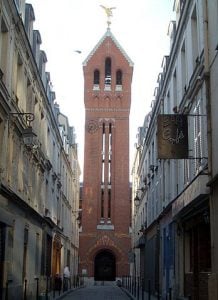
Situated on the right bank of the River Seine, the 17th arrondissement of Paris arrondissement is divided in 4 administrative districts: Ternes and Monceau in the southwestern part, two upper-class districts which are more Haussmannian in style; in the middle of the arrondissement, the Batignolles district, an area mostly occupied by young families or couples, with a marked gentrification process.
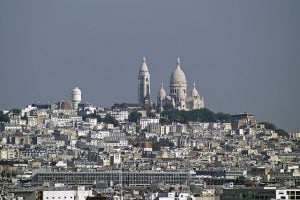
The 18th arrondissement, located on the Rive Droite (Right Bank), is mostly known for hosting the district of Montmartre which contains a hill known for its artistic history, the house of music diva Dalida, the Moulin Rouge cabaret, other historic features, and the prominent Sacré Cœur basilica which sits atop the hill.
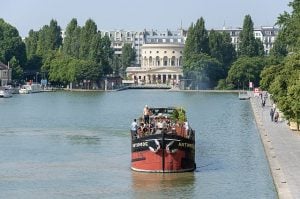
Situated on the Right Bank of the River Seine, the 19th arrondissement is crossed by two canals, the Canal Saint-Denis and the Canal de l'Ourcq, which meet near the Parc de la Villette.
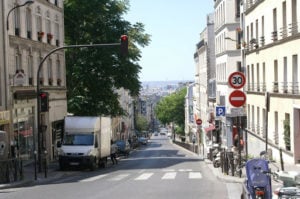
The 20th arrondissement (also known as "arrondissement de Ménilmontant"), located on the Right Bank, contains the cosmopolitan districts of Ménilmontant and Belleville. It is also internationally known for the Père Lachaise Cemetery where one can find the tombs of many famous composers, writers, painters, musicians, and the playwright Molière.
Hovering over the different areas or arrondissements of Paris will display a highlight of that area. Clicking will load more information about that arrondissement in the panel on the left, including the name, a photo, and some text.
Draw Attention is progressively enhanced and built according to web standards and best practices. The code is high-quality and carefully tested.
Join the 20,000+ designers and web developers who use Draw Attention to build interactive content on WordPress faster and better than ever before.


Subscribe to our newsletter for updates, tips, and exclusive offers.